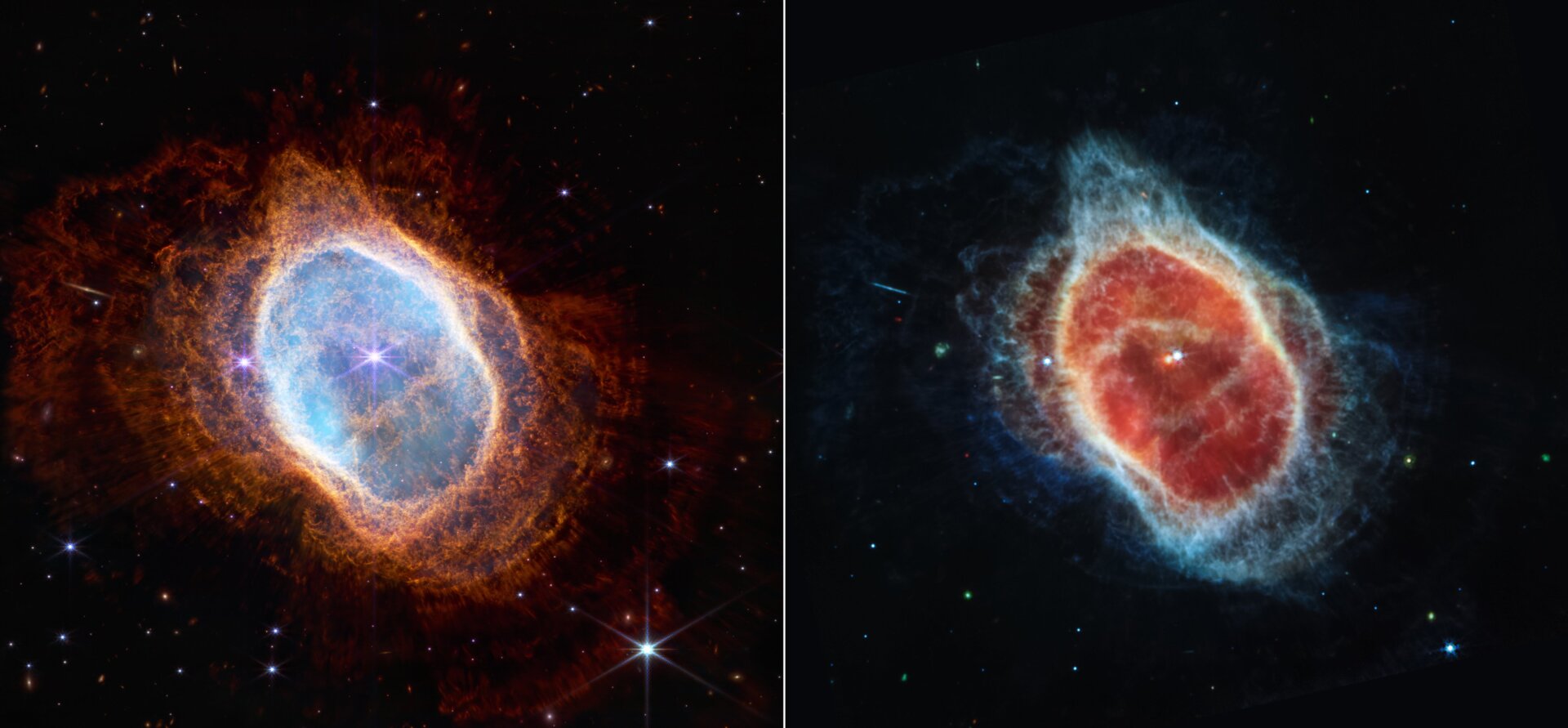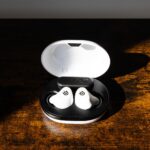NASA is releasing the first full-color images taken by the Webb Space Telescope, and holy cow. The five images—with the first revealed last night and the rest coming out one by one this morning—are a remarkable first glimpse at the science to come for the cutting-edge space observatory, which is expected to operate for about 20 years, if not longer.
The first image out today was a graphic showing the spectra for WASP-96b, a gas giant exoplanet 1,150 light-years from Earth. The data showed the “distinct signature of water” as well as evidence of of clouds and haze in the planet, which is slightly larger than Jupiter but has a lower mass, according to a NASA release. “Webb’s immediate and more detailed observation marks a giant leap forward in the quest to characterize potentially habitable planets beyond Earth,” the release says.

The images depict two nebulae (the Carina Nebula and the Southern Ring Nebula) and five closely-clustered galaxies known as Stephan’s Quintet. The Carina Nebula is one of the brightest nebulae in the sky, located 7,600 light-years from Earth, and the Southern Ring Nebula is a mere 2,000 light-years away. In other words, Webb observes the Carina Nebula as it was when some of the earliest cities on Earth were occupied.
In the image of the Southern Ring Nebula; the team found an entire galaxy on the periphery of the luminous gas. In the image of Stephan’s Quintet—the largest of Webb’s images so far, made up of 150 million pixels—the collision of galaxies is seen with remarkable clarity. And in the spellbinding shot of the Carina Nebula—known to be a stellar nursery—individual baby stars can be seen for the first time.
The Webb telescope takes in light at the infrared and near-infrared wavelengths, so they need to be translated into visual light by the Webb team. That’s a necessary step, as our eyes do not see at infrared and near-infrared wavelengths.

Yesterday, President Biden unveiled the first full-color image, which was a deep field taken of the galaxy cluster SMACS 0723. That image captured a sweeping view of thousands of galaxies, each constituted by innumerable stars, nebulae, planets, and other cosmic objects.
“The level of detail in this image is spectacular, beyond even what the nominal specs for the telescope would indicate,” said Michael Gladders, an astrophysicist at the University of Chicago, in an email to Gizmodo. “The range of colors in all of the lensed galaxies, and the sharpness of the tiniest features inside them points to a richness of data so much beyond what we’ve been working with.”
The deep field image capitalized on gravitational lensing—the warping of light around an object with strong gravitational effects—to see much more ancient light beyond it, from some of the earliest galaxies in the universe.

“Pretty much every image that Webb takes is going to be better than the Hubble Ultra Deep Field,” Dan Coe, an instrument scientist for Webb’s NIRCam instrument and an astronomer at the Space Telescope Science Institute, told Gizmodo in a phone call last week. Coe was referring to a famous image of the cosmos that contains nearly 10,000 galaxies spanning billions of light-years.
“In some cases, the Ultra Deep Field still might be better at some wavelengths—but then Webb goes out to much farther wavelengths, and it also has much better resolution,” he added. “It’s just hard not to surpass what’s been done by a lot.”
Though the Webb telescope (named for a former NASA administrator) will famously peer back deeper in space (and thus farther back in time) than any previous telescope, it also is charged with looking at the atmospheres of exoplanets, which will give scientists a better idea of the diversity of worlds beyond our solar system. Later this year, the telescope will also focus on local objects, like our own gas giant (Jupiter) and some of its moons.

All told, Webb’s observations will cast the objects of the cosmos in much sharper relief, allowing scientists to better understand the origins of heavy metals in the cosmos, the evolution of galaxies, the birth of stars, the diversity of planets outside our Solar System, and perhaps even provide some leads for astrobiologists seeking the origins of life on Earth and beyond.
Thanks to the years of effort from everyone who worked on this space observatory, the future of astronomy is very, very bright. And by the future, I mean the past.
More: Gaze Into the Deepest View Yet of Our Universe: Webb’s First Full-Color Image Is Here








